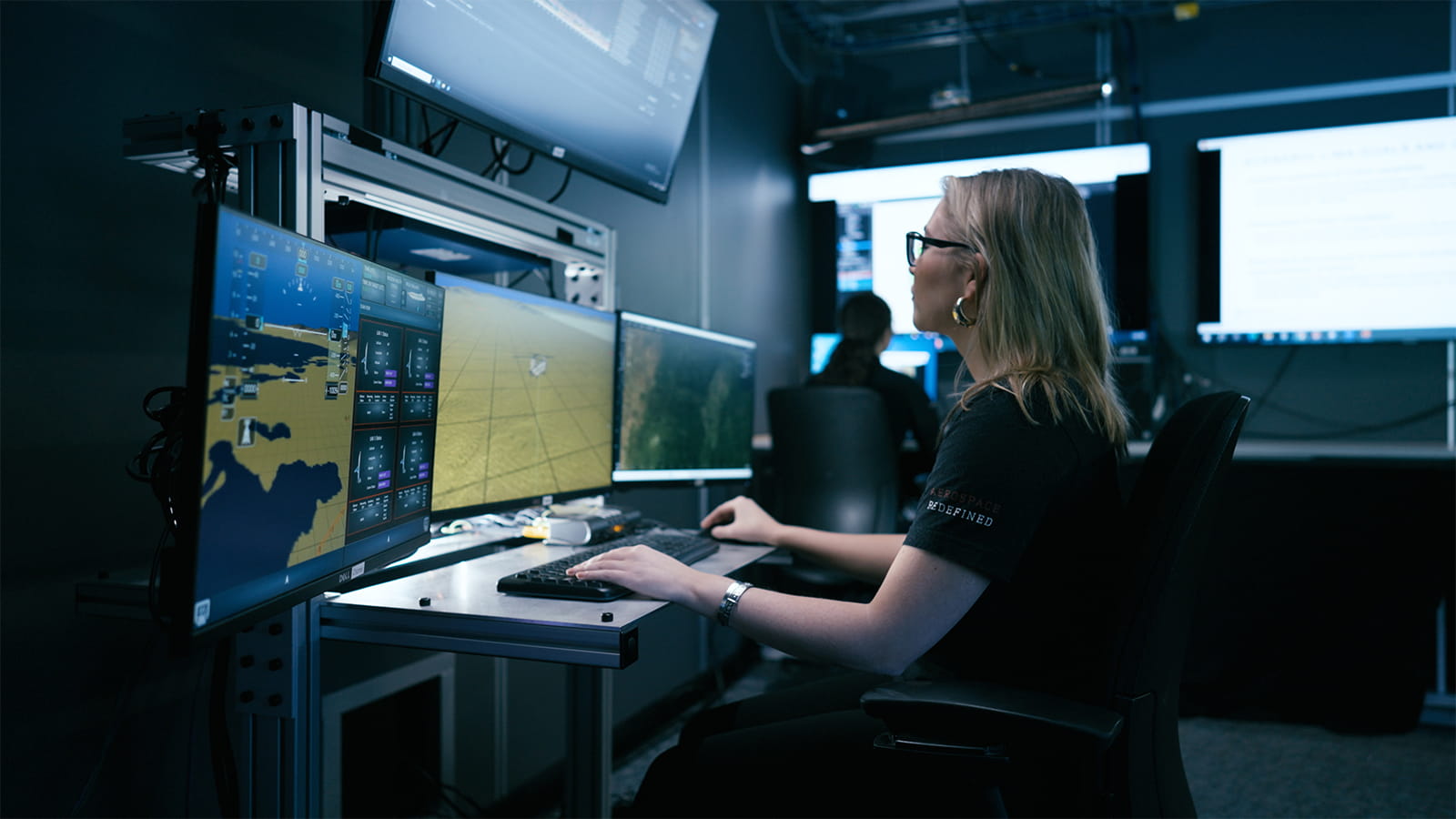$7.3 billion
invested by RTX in research and development in 2023
As a U.S. Army lieutenant general, Eric Wesley spent a lot of time thinking about how to share information on the battlefield.
There are millions of sensors collecting data across space, at sea and on land, but bandwidth is limited, security is a concern, and sometimes, the devices aren’t built to talk to each other.
The vision to connect all those devices is called multi-domain operations, and when Wesley retired, he made it his personal mission to turn that vision into reality. In 2022, he became CEO of startup Parasanti, which seeks to make military devices more capable through software that maximizes their processing power and provides a shared language for systems that were previously incompatible.
“I believe it’s fundamental to our national security,” Wesley said. “The essence of multi-domain operations is you don’t have to have the most devices, but we need to be able to integrate them at the right spot at the right time so the total is greater than the sum of the parts, and you can overwhelm your opponent.”
A recent partnership with Collins Aerospace, an RTX business, proved how Parasanti’s software could help. They collaborated to demonstrate a new capability that combines two technologies:

Collins Aerospace and Parasanti demonstrated how their solution can make UAVs more agile and collaborative.
At Collins’ RapidEdge Battle Lab in Cedar Rapids, Iowa, the team presented a simulated scenario, where they deployed a team of UAVs from a helicopter.
During the mission, manned aircraft received intelligence that required the UAVs to change their approach. Parasanti's application deployed an additional UAV that flew to the team and, in seconds, installed the software they needed to complete the mission – a step that saved the UAVs from having to fly back to a helicopter for the download.
“It’s really just a smarter use of the computer,” Parasanti Chief Technology Officer Trigg Borgerson said.
It saves time, keeps manned aircraft farther from danger, and, by transferring data as close to the source as possible, reduces the risk of an adversary intercepting the download.
“This type of software deployment in the field allows our systems to actually be smaller, cheaper and more agile when they get fielded,” said Peter Laird, a Collins program manager for launched effects. “You don’t need to make it one size fits all right out of the gate.”
The demonstration is an early success story for an initiative called Powered by Collins that launched in 2023. Collins’ director of open innovation, Jonathan Hartman, started it to help the business find small-to-medium-sized companies with technologies that could easily be integrated into Collins products.
Collins selected three companies to participate in its first round and opened the program again in 2024 focused on key research areas including designing new aircraft displays and using data to improve air-travel time estimates, operations and product lifecycles.
“We’re looking for solutions, and we want to find non-traditional partners to help work those solutions together. Last year we invested about $4 billion on development activities,” Hartman said. “About $285 billion was invested into the global startup community by venture capital – nearly 80 times our expenditure – so, how do we leverage that investment to accelerate solutions for our customers?”
invested by RTX in research and development in 2023
For the small businesses, Powered by Collins provides access to customers, insight on aerospace markets and opportunities, and facilities for testing and development. The Collins and Parasanti teams were able to modify existing Parasanti applications and refine them in Collins labs to develop the UNITE application in just three months. They ran thousands of digital models based on real datasets to reduce development time and validate their work.
Collins Principal Systems Engineer Kyle Litwin said it also showed that they were able to quickly integrate third-party software.
“That’s what we’re trying to do,” Litwin said. “We’re trying to deploy new capabilities quickly to the edge. The intent is that they will be used by the U.S. military out in the field using our rapid mission system, conducting real-world, important missions that will keep our manned aircraft pilots safe.”
Hartman said Collins and Parasanti are working toward flight testing the UNITE application, and they continue to explore opportunities for new solutions. Borgerson said the partnership has been a success for Parasanti, too.
“Basically overnight, Collins was able to leverage two years of our investment. I think there’s some good return on investment in that strategy,” Borgerson said. “It completely vetted our strategy that companies like Collins could benefit from our software. I think it’s great for small business and startups, it’s great for the industry, and it’s great for our common end customer.”